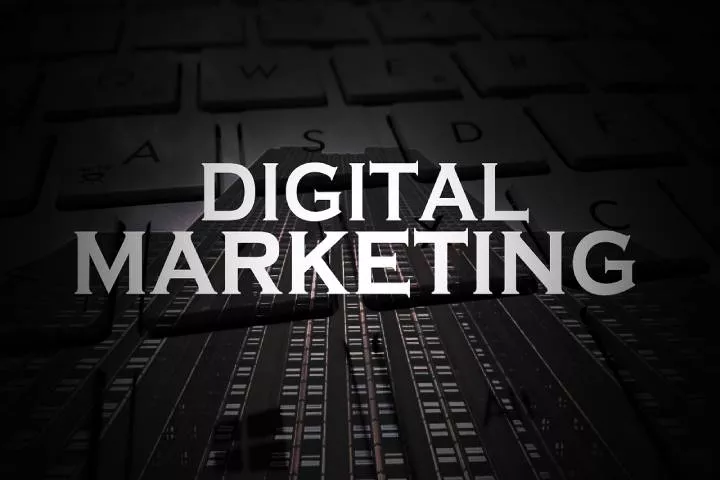Business
4 Supply Chain Strategies for Digital Growth
Organizations generally model their supply chain strategies on their business model and customer demands. Supply Chain Strategies for Digital Growth.

Business models continue to adapt to today’s digital economy and consumer demand. For new and established companies to succeed, they have to be equipped with suitable supply chain strategies to meet the standards.
Consumers now tend to want and buy products and services quickly with websites and smartphone apps. Setting up and implementing the ideal strategies to control the supply chain will help businesses grow and increase their profit margin.
A comprehensive and effective plan will ensure that a business can smoothly move products through the supply chain. In addition, operations will efficiently function, costs will reduce, and profitability will increase.
Organizations generally model their supply chain strategies on their business model and customer demands. The following are some of the techniques that can help your business grow.
Table of Contents
1. Customer-Centricity
This strategy streamlines its focus on the needs and preferences of customers. To ensure a customer-centric strategy, a business owner will have to improve the demand forecasting accuracy. It will enable the said company to prepare the inventory products to meet projected demands.
Businesses can pinpoint in-demand trends and products by using inventory management software that has forecasting abilities. The tool will record data concerning sales and stock. It will then provide real-time reports.
By using this strategy, organizations will be able to improve their financial performance while providing excellent customer service. Regular monitoring of demand will allow business owners to enhance their collaboration with suppliers, which will help in the efficient handling of new inventory.

2. Predictive Business
Setbacks like delayed shipment and machine malfunction will happen at times. However, businesses will be able to prevent most of these issues by quickly attending to them with the help of predictive technology.
By using predictive maintenance, a business can obtain a clear and concise view of its entire operation – including assets, products, and equipment. Insight can also be gained regarding product improvements and cost minimization methods.
3. Intelligent Automation
There’s no denying that businesses, regardless of industry, have embraced the integration of automation. This has been a very effective supply chain management strategy. Automation includes delivery drones, autonomous forklift trucks, and software solutions to streamline warehouse management.
Manufacturing companies maximize their supply chain’s potential by using intelligent automation. This solution utilizes robotic processes, AI, and software engineering practices to automate complex business operations. Manufacturers use this tool to mass-produce consumer-friendly products.
This will undoubtedly boost the revenue and sales of a business. Also, the flexibility automation provides allows companies to manufacture products when they’re needed – instead of manufacturing large quantities at once.
4. Total Visibility
For the supply chain to be managed appropriately, business owners will need complete visibility into every process and its role. Executives will have to monitor the production and delivery of the products. They will also have to regularly assess sales data to determine any future disruption in the supply chain.
With real-time supply chain visibility, management will be able to identify anomalies in the supply chain. They can also make quick adjustments to the production process or inventory to rectify the anomaly. This will go a long way in minimizing risks and spending.
Business
Navigating the Process of Selling Deceased Estate Shares
This article aims to provide a comprehensive guide to selling shares from a deceased estate. Process of Selling Deceased Estate Shares.

Table of Contents
1. Understanding the Basics of Selling Deceased Estate Shares
Dealing with a deceased estate can be a challenging and emotional process, especially when it comes to handling financial assets like shares. This article aims to provide a comprehensive guide to selling shares from a deceased estate.
2. What are Deceased Estate Shares?
Deceased estate shares refer to the stocks and shares that were owned by an individual who has passed away. These shares become part of the deceased’s estate and are subject to the terms of their will or estate plan.
3. The Importance of Valuing the Shares
The first step in selling deceased estate shares is to obtain a current valuation. This valuation is crucial for several reasons: it helps in distributing the estate among beneficiaries, it may be necessary for tax purposes, and it gives an idea of the market value of the shares.
4. Legal Requirements and Executor Responsibilities
The executor of the estate plays a pivotal role in the management and distribution of the deceased’s assets. This section will cover the legal responsibilities and steps the executor needs to take to lawfully sell the shares.
5. Obtaining Probate
Before any action can be taken with the shares, it’s often necessary to obtain probate. Probate is a legal process that confirms the executor’s authority to deal with the deceased’s assets.
Transferring Shares into the Executor’s Name
Once probate is granted, shares may need to be transferred into the name of the executor. This process varies depending on the company and the type of shares.
6. The Process of Selling Shares
After completing legal formalities, the executor can proceed with selling the shares. This section will outline the steps involved in this process, including choosing a brokerage or financial service, understanding market conditions, and making informed decisions.
Deciding on the Right Time to Sell
Timing can significantly impact the returns from selling shares. Executors need to consider market conditions and financial advice to determine the best time to sell.
Completing the Sale
This subsection will detail the actual process of selling shares, including placing orders, handling transaction fees, and ensuring all regulatory requirements are met.

7. Navigating Tax Implications and Reporting
Managing tax obligations is a critical aspect of selling deceased estate shares. This section will explain the potential tax implications and the importance of accurate reporting for both capital gains tax and inheritance tax considerations.
Understanding Capital Gains Tax Responsibilities
When shares are sold, any profit made from the time of the deceased’s passing to the sale date may be subject to capital gains tax. Executors need to be aware of these implications and plan accordingly.
Inheritance Tax Considerations
In some jurisdictions, the value of the deceased estate’s shares might impact inheritance tax calculations. It’s essential for executors to understand these aspects in order to ensure compliance with tax laws.
8. Common Challenges and How to Overcome Them
Selling deceased estate shares can present unique challenges. This section will discuss common issues such as disputed wills, fragmented information about the shares, and market volatility.
Dealing with Disputed Wills and Beneficiary Disagreements
Disputes over the will or disagreements among beneficiaries can complicate the process. Executors must handle these situations delicately and legally.
Managing Market Volatility
Shares can be subject to market fluctuations. Executors should be prepared for this volatility and may need to consult financial advisors to navigate these waters effectively.
9. Tips for Executors Handling Deceased Estate Shares
This section will provide practical advice for executors, including the importance of seeking professional advice, keeping thorough records, and communicating clearly with beneficiaries.
Seeking Professional Financial and Legal Advice
The complexity of selling shares from a deceased estate often necessitates professional advice. This can range from legal counsel to financial advisory services.
Record Keeping and Communication with Beneficiaries
Maintaining transparent and thorough records is crucial. Executors should also prioritize clear and consistent communication with all beneficiaries to avoid misunderstandings.
Conclusion
Selling shares from a deceased estate is a responsibility that requires careful attention to legal, financial, and interpersonal dynamics. By understanding the process, staying informed about tax obligations, and tackling challenges head-on, executors can fulfill their duties effectively and respectfully.

 Instagram3 years ago
Instagram3 years agoBuy IG likes and buy organic Instagram followers: where to buy them and how?

 Instagram3 years ago
Instagram3 years ago100% Genuine Instagram Followers & Likes with Guaranteed Tool

 Business5 years ago
Business5 years ago7 Must Have Digital Marketing Tools For Your Small Businesses

 Instagram4 years ago
Instagram4 years agoInstagram Followers And Likes – Online Social Media Platform





















